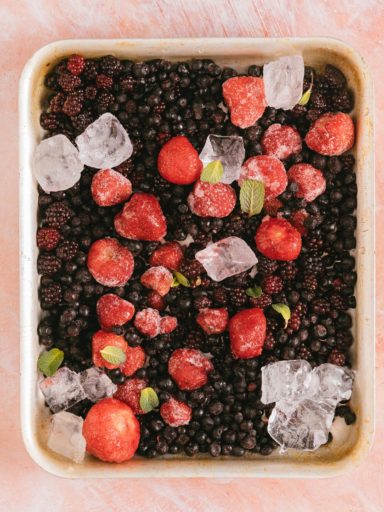What if you traded out your morning brew for a smoothie?
While many smoothie recipes on the internet either don’t work or aren’t packed with nutrients, nutritional smoothie recipes do exist. Eating the daily dose of fruits and veggies might prove difficult, especially if you’re constantly on-the-go or hate to cook.

Smoothies are perfect for busy people and anyone who wants to eat better foods — that is, more nutritionally-dense foods — and here are the reasons why:
1. Nutritional boost
Struggle to consume your necessary daily intake of essential nutrients from fruits, veggies and grains?
Smoothies provide an amazing nutritional boost when you add highly nourishing ingredients, like beet powder or nut and seed butters. Many smoothies are made by adding any and every fruit that sounds good, hoping for the best, and calling it a “success” when the result tastes good.
However, there’s a science to developing smoothies that taste good, feel good and do a lot of good for our bodies — without watering it down with ice or adding a lot of sugar.
Learning what fruits pair well together, how to hide the earthy taste of veggies, and how to achieve the sweetness you want without loading the smoothie up does wonders.
2. Improved digestion and gut health
Leafy greens, bran, prunes, raisins, and even white beans can be added to smoothies to aid in digestion.
Using yogurt (plain, Greek or specifically probiotic) as a base adds density to the smoothie so it’s more filling, while also providing helpful bacteria your gastrointestinal system needs to function properly.
3. Better energy
Drinking smoothies on a regular basis might help you feel lighter and like you have a lot more energy to do what you need and want to do each day.
Some foods provide better energy than each other. You can also blend protein bars into smoothies and reap those benefits in the form of a drink if you don’t want to chew or eat the granola bar in its regular form.
This way, you consume more energy in one go your body can utilize as opposed to only eating an energy bar that doesn’t quite fill you up (although eating a protein bar and drinking a smoothie works, too).
4. Can replace soda or juice
Not every meal tastes good with a smoothie, but most things you drink juice with can be eaten while drinking a smoothie instead. Most breakfasts, for example, pair well with a smoothie.
If your smoothie is heavy or thick, pair it with a snack — like a granola bar, bread or fries — instead of a full-on meal, because you probably won’t be able to eat everything on your plate while drinking that smoothie.
5. More interested in fruits and veggies
The more you consume nutrient-dense foods, the more likely you are to want them. You’ll feel less “bad” for fulfilling your cravings and perceive cravings more neutrally — possibly because you’re eating more fruits and veggies on the regular now.
Kids exposed to foods with higher nutrition density, for example, will opt for those choices more often than candy. A toddler with clementine oranges at their disposal will explore by biting into the orange and eventually learning to peel it — even if that’s teeny, tiny chunks.
Next thing you know, they’re reaching for clementine oranges left and right, and they want oranges over the lollipops on the counter (but they do still enjoy the candy, on occasion).
When you stop restricting yourself from enjoying certain foods, you want them less often. When you actively make available “healthier” choices, you might find your cravings lean towards those choices instead.
